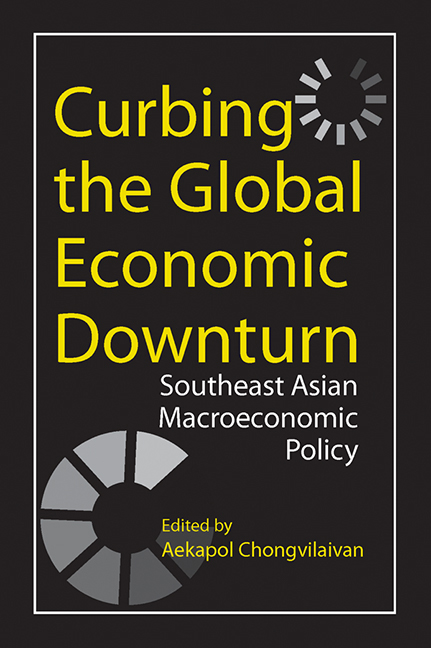Book contents
- Frontmatter
- Contents
- Acknowledgements
- Introduction
- List of Contributors
- PART I Economic Fluctuations: Macroeconomic Effects and Policy Responses
- 1 Macroeconomic Impacts of a Financial Crisis
- 2 Capital Inflow Reversals, Current Account Adjustments, and Macroeconomic Performance
- 3 Supply-Side Causes of Macroeconomic Fluctuations in a Small Open Economy
- 4 Effectiveness of Fiscal Stimuli
- 5 Public Debt Sustainability and Its Macroeconomic Impacts
- PART II Economic Co-operation in Southeast Asia
- Index
3 - Supply-Side Causes of Macroeconomic Fluctuations in a Small Open Economy
from PART I - Economic Fluctuations: Macroeconomic Effects and Policy Responses
Published online by Cambridge University Press: 21 October 2015
- Frontmatter
- Contents
- Acknowledgements
- Introduction
- List of Contributors
- PART I Economic Fluctuations: Macroeconomic Effects and Policy Responses
- 1 Macroeconomic Impacts of a Financial Crisis
- 2 Capital Inflow Reversals, Current Account Adjustments, and Macroeconomic Performance
- 3 Supply-Side Causes of Macroeconomic Fluctuations in a Small Open Economy
- 4 Effectiveness of Fiscal Stimuli
- 5 Public Debt Sustainability and Its Macroeconomic Impacts
- PART II Economic Co-operation in Southeast Asia
- Index
Summary
INTRODUCTION
Empirical macroeconomic research in recent times has sought to rediscover the causes of business cycle fluctuations in the industrialized economies. Studies in this vein are provided by, inter alia, Shapiro and Watson (1988), Blanchard and Quah (1989), Moreno (1992), and Karras (1994). These works employed a variant of the vector autoregressive (VAR) methodology to investigate the contributions of aggregate demand and aggregate supply shocks to macroeconomic fluctuations. Typical demand shocks consist of disturbances to the goods and money markets, while supply shocks include oil price shocks, technological disturbances, and labour supply shocks. A common finding shared by the studies is that supply shocks play an important role in the business cycle fluctuations of developed countries.
Notwithstanding the renewed interest in the subject, there have been only two published studies along the above lines on business cycles in the small open economy of Singapore. The first of these, by Makrydakis (1997), recovered generic demand and supply shocks from a bivariate VAR model estimated for output and inflation. The author found that supply shocks are the dominant source of the growth cycles — fluctuations in the growth rate of economic activity — experienced by Singapore during the last two decades. However, given the multitude of possible supply shocks and their differential impact on the economy, it is questionable whether a single aggregate supply shock recovered from the data can be meaningfully interpreted.
The second study by Choy (1999) explored the sources of macroeconomic fluctuations in Singapore through a six-variable structural VAR model, identified by Keynesian-style short-run restrictions. Of the business cycle shocks examined, three can be classified as aggregate demand disturbances and the remaining three as aggregate supply shocks. Choy (1999) showed that although demand shocks are important, supply disturbances accounted for more than half of short-run output fluctuations, thus suggesting that the latter deserve serious attention from researchers.
- Type
- Chapter
- Information
- Curbing the Global Economic DownturnSoutheast Asian Macroeconomic Policy, pp. 51 - 66Publisher: ISEAS–Yusof Ishak InstitutePrint publication year: 2010



